|
Tao Te Ching
THE TAOISM OF LAO TZU
|
The Book: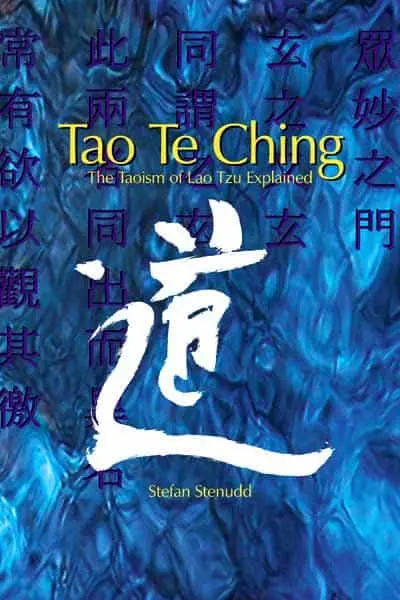
|
The Book
The Taoism of Lao Tzu Explained. The great Taoist philosophy classic by Lao Tzu translated, and each of the 81 chapters extensively commented. Click the image to see the book at Amazon (paid link). |
The book has become one of the foremost world classics of wisdom — maybe even more relevant today than it was to Lao Tzu's contemporaries.
How to get the book
If you want to buy the book, you can do so at most Internet bookstores. Click the image below to see the book at Amazon (paid link). The link takes you to your local Amazon store (or to Amazon.com).

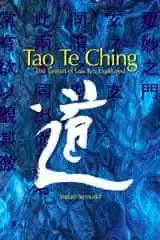
Facebook Page of Tao Te Ching Explained
Click the header to visit the book's Facebook page.
A Faithful Translation of the Tao Te Ching
In this translation of the text I focus on the clarity and simplicity by which Lao Tzu expresses his fascinating cosmology and profound ethics.This simple directness of his text is often corrupted in Western versions, especially if they try for a poetic rendering. That may be aesthetic, but much of Lao Tzu's thinking gets lost in the process.
I have strived for a literal translation, as much as possible with an ancient Chinese text. I wanted the clarity of the Tao Te Ching to stand out. That's what has always impressed me the most about it.
Also, I have added my comments and explanations in the traditional manner for both Chinese and Western classics: immediately following each chapter. That's how Chinese commentators treated the Tao Te Ching and the other books they cherished, and that's how European scholars of old transmitted the ancient texts. I found it very inspiring and I hope that the reader will enjoy this guided tour through Lao Tzu's text and thoughts.
In this way, I explain each chapter thoroughly, also regarding how this old wisdom can be understood and applied today. Society has changed significantly since the days of Lao Tzu — but much of it is forever the same. His ideas still have tremedous value and relevance.
A Longtime Companion
I was introduced to the Tao Te Ching by my Japanese aikido instructor, when I was at the end of my teens. He gave me a copy of the book, explaining its tremendous importance in East Asian culture and philosophy. I was immediately fascinated by the text, just by reading the first chapter. I still am.The gentle wisdom of Lao Tzu still strikes me as one of the most profound in the history of human thought. It deserves to be transmitted to every new generation. We need it. Without the teaching of the noblest minds of our past, how can we manage our way into the future?
In 1991, twenty years after I was introduced to the Tao Te Ching, I published my first commented translation of it. That was in Swedish. I did so simply because no Swedish versions was to be found in the bookstores. Also, the record old Tao Te Ching manuscripts found in Mawangdui in the 1970s raised the need for a new translation. They clarified a lot about the old classic.
Through the following decades I published several revised editions of my translation. Thereby I could also include discoveries made through the finding of the Guodian manuscript, a century older than the Mawangdui ones. But I never dreamed of making an English version.
Hesitations
In the English language, there is a constantly increasing number of Tao Te ching translations, their quality differing as much as their approach to Lao Tzu's text. I couldn't imagine that there would be need for one more.I can't say I've read them all, not even most of them. But I have studied the significant and respected English translations of the last two centuries. That's normal when you make your own interpretation of a classical text. That's part of the book's history and the clue to how it can be understood today.
Well, considering the many English versions I read and the many more I glanced at, a deficiency became visible. In most of the versions, the wonderful simplicity and clarity of the Tao Te Ching was dimmed by the translators rushing to their own interpretations, which were often quite far-fetched, to say the least. I was gradually convinced that there was room for the kind of version I prefer, also in the English language.
Still, I couldn't make myself rush the project. After a lot of hesitation, I got started with the first chapters and my comments to them. It went fine and I was delighted. But at the twntieth chapter of the 81 in the book, I suddenly stopped and couldn't write another word.
I knew why. Tao Te Ching is nothing to rush through. The simplicity doesn't make it light, but heavy as lead. Although I had been very familiar indeed with the book for almost 40 years, this new translation also took its toll in time. It took me almost two years before I could resume my work.
But then it went like a charm. In just a few months — and that's light speed when it comes to books — I was finished. It was published in February, 2011 — twenty years after my first Swedish version of the book, and 40 years after I was introduced to it. A double personal jubilee.
But the years have taught me — I'm still not finished with Lao Tzu's masterpiece, the Tao Te Ching. I don't think anyone of its readers ever is.
See also the book's Table of Contents and the whole Preface below.
Tao Te Ching: The Taoism of Lao Tzu Explained.
by Stefan Stenudd, Arriba 2011, 2015
Paperback, 318 pages
ISBN: 978-1-5142-0804-5
Printed by CreateSpace
Table of Contents
Preface 7Introduction 13
Tao, the Way
1 It's All Real 37
2 Don't Split the Unity 40
3 As Little as Possible 46
4 The Hidden Cause 49
5 The Limit of Compassion 53
6 The Womb 57
7 Unselfishness 59
8 Good 61
9 Moderation in All 67
10 Modest Omnipotence 71
11 The Necessity of Emptiness 76
12 Moderation 79
13 Fear 82
14 Obscure Tao 86
15 Ancient Excellence 88
16 The Cycle of Life 91
17 Unnoticed Ruler 94
18 Pretense 97
19 Gain by Abandoning 100
20 I Am Alone 104
21 The Clarity of Obscurity 111
22 Humility Brings Honor 116
23 Deprived of Deprivation 119
24 Banned If You Boast 121
25 Four Greats 123
26 Be Still 127
27 Teacher and Student 129
28 Be Like Uncarved Wood 132
29 Don't Change the World 137
30 Peaceful Solutions 141
31 Victory Is Cause for Grief 144
32 All Follow Those Who Follow Tao 147
33 Longevity 150
34 It's Great to Be Small 154
35 Elusive, But Never Exhausted 157
36 One Postulates the Other 159
37 Nameless Simplicity 163
Te, the Virtue
38 The Highest Virtue 169
39 Unity with the One 174
40 A Cyclic Universe 177
41 Laughing Out Loud 179
42 Violence Meets a Violent End 182
43 Non-Action 187
44 Life Is the Treasure 189
45 Appearances 191
46 Enough Is Enough 194
47 Understanding without Exploring 196
48 Let Go 199
49 The Concern of the Sage 202
50 How to Survive 204
51 All Things Are Nurtured 207
52 Return to Clarity 210
53 Robbery 214
54 Cultivate Virtue 216
55 The Virtue of the Infant 219
56 Integrity 223
57 People Can Govern Themselves 226
58 What to Trust? 229
59 Rule with Moderation 232
60 The Ghosts Approve 235
61 Conquer by Yielding 237
62 The Greatest Gift 240
63 Big Is Small at First 242
64 The Sage Dares Not Act 245
65 No Rule by Knowledge 250
66 Go Low to Stand High 254
67 Battle with Compassion 257
68 Peaceful Warriors 261
69 Like a Guest 264
70 Easy to Understand 267
71 Knowing Illness 270
72 Don't Make Them Weary 272
73 Heaven's Way 275
74 The Supreme Executioner 280
75 People versus Rulers 284
76 Life Is Soft and Weak 287
77 Raise the Low 289
78 Water Surpasses All 291
79 Honor the Settlement 295
80 Simple Utopia 299
81 The Ideal 302
Literature 309
Preface to the book
My first meeting with the Tao Te Ching was in my late teens. It was Toshikazu Ichimura, my Japanese teacher of the peaceful martial art aikido, who gave me a copy of it — the Gia-Fu Feng and Jane English version with beautiful calligraphy, which is still in print. He thought that my impatiently inquisitive mind would benefit from studying it.Already by reading the first chapter, which compares desire and the freedom from desire without seeming judgmental, I was hooked. That appeals to a teenager.
The book remained with me, far beyond my teen years. It spoke of so many other things that I found relevant. Contrary to most reading experiences of my youth, I found Lao Tzu's work to increase its relevance, as if written in a future that we still have not reached. That alone is an enigma making it impossible to let the book gather dust in the shelf. It contains many others.
Tao Te Ching, which is the major source of Taoism, has a clouded origin. It was composed no earlier than the 6th and no later than the 4th century BC. According to legend, its writer was Lao Tzu, a high official of the Chinese empire, who left his work and his country in dismay, fed up with the charade of government.
He is said to have departed riding on a water buffalo. A border guard, impressed by his wisdom, pleaded him to write down his thoughts before leaving China. So he did. Then he crossed the border, never to be seen again.
His text is around five thousand words long, divided into two parts. One of them begins with the word Tao, the Way, the other with the word Te, virtue. The Tao Te Ching, the Book on the Way and Virtue, is a text as difficult to interpret as its origin is to ascertain. It speaks with simple directness, but conveys ideas so elusive that they have been discussed for over two thousand years, without any consensus reached as to their meaning.
Although clear about presenting a worldview and arguing for it, the book is written with the elegance and artistry that makes it most appropriate to call it a poem. Also, most of it is rhymed. That's not very difficult with Chinese rules for rhyme, but it still indicates that the author intended more than to pursue a line of reasoning.
Probably, the subtleties included were only possible to put into words with the added sophistication of poetry. What was to be said needed an artistic approach, just like some complex truths about the conditions of life need fiction to be pointed out.
To be understood at all, the text needs to be contemplated and interpreted by several minds. This has indeed been done, through the centuries, and that process is not at all slowing down.
Tao Te Ching has had countless Chinese commentaries through its circa 2,500 years of existence. The text reached the West rather late, but we've more than made up for that by an accelerating number of Western translations in the last hundred years. They keep coming.
That's necessary. The text is far too vague and unclear to be trusted to just one translation. There must be several perspectives in which to see it and several shapes in which to form its wordings in English and other languages.
No doubt, although the text has been kept faithfully intact through all this time, each generation needs its renewed interpretations in order to approach it and grasp its subtle meaning.
That's true for any classic. In a constantly changing world, it's necessary to reinterpret the classics in order to have a chance of grasping them. That way, we may even succeed to reveal new things about them, and come closer to a definitive understanding of them. Even if we don't, it's by reexamination that we keep them alive and carry them with us into the future. The words of Lao Tzu definitely belong to those that deserve our continued attention and preservation.
So, here is my version of the Tao Te Ching.
Almost twenty years ago, I made a Swedish translation of Lao Tzu's text, the first edition of which was published in 1992. Actually, the project started with another goal in mind.
In the 1980s, I was writing a novel and got the idea to begin each chapter with a quote from the Tao Te Ching. That would fit my story in an intriguing way. But the few existing Swedish versions of the Chinese classic didn't appeal to me as much as the English versions I had come across. After some struggle, I came to the conclusion that I needed to make my own translations of the quotes I wanted to use.
The job was mesmerizing, so I found myself translating the whole book. I was still in doubt about it, until a prominent Chinese poet, Li Li, who lives in Sweden, agreed to proof read. He approved of my version, with some kind words about it that made me confident enough to have it published. My novel was published later the same year.
Since then, I have reexamined and reworked my Swedish version of the Tao Te Ching in several editions. It has become an obsession.
For this English edition, though, I started all over. I wanted to avoid following old trains of thought and any preconceptions. The translation into another language needed a fresh approach.
Sure enough, it made me discover new things about the text and coming to new conclusions about its content. So, for me it was again a wonderful journey. I hope the reader will share some of my delight.
In this version, I have returned to a very old tradition in dealing with the classics, practiced in the East as well as in the West. I let each chapter be followed by my comments about it. That way, the reader will have me as a close companion all through the Tao Te Ching. Those who prefer to do the voyage through Lao Tzu's words all by themselves can simply skip my comments and go directly from chapter to chapter of the translated text.
As for my comments, I mainly try to explain what I believe Lao Tzu to be pointing out in each chapter. I frequently use modern phenomena as references, so that it's obvious how much Lao Tzu still has to teach us. I have no doubt of it.
Where needed, I also explain some circumstances of the Chinese context in which Lao Tzu was writing. But most of his text deals with matters that are just as true now, in the Western world, as they were in China some 2,500 years ago.
As for my translation of the Tao Te Ching chapters, my main effort has been to make the text direct, to the point, without additional poetic clouding or any attempt of decorating it in a manner common for sacred texts. That's how I perceive the original.
Lao Tzu spoke with amazing simplicity and clarity, using almost no decorations or other intricacies in his language. Although the meaning behind them is often vague, maybe even cryptic, his words are easy to understand.
That's what I have tried to accomplish in this translation. Lao Tzu's message is far too important for his words to be covered in archaic artistry that was not present to begin with.
Like many other supreme works of literature, his words remain here and now, no matter how many years have passed since they were written. In translating them, we should not try to cover them in dust, as a futile method of dating them, but brush them off and present them in the purity and relevance they seem never to lose.
Tao Te Ching is one of those books that forever stay contemporary.
February, 2011
Translation without explanations
I have also made an edition of the Tao Te Ching with just the text of Lao Tzu translated, and no explanations. It was at the request of a reader. Indeed, it is a pleasant way of experiencing the words of Lao Tzu in themselves. Click the header to read more about that edition.
My Taoism BooksClick the image to see the book at Amazon (paid link).
The Taoism of Lao Tzu Explained. The great Taoist philosophy classic by Lao Tzu translated, and each of the 81 chapters extensively commented. |
About Cookies
My Other Websites:
I Ching Online
The 64 hexagrams of the Chinese classic I Ching and what they mean in divination. Try it online for free.
Qi Energy Exercises
The ancient Chinese life energy qi (chi) explained, with simple instructions on how to exercise it.
Life Energy
The many ancient and modern life force beliefs all over the world explained and compared.
Taoismen på svenska
Other Books by Stefan Stenudd
Click the image to see the book at Amazon (paid link).
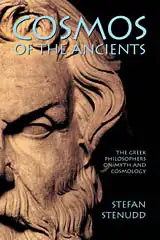 Cosmos of the Ancients
Cosmos of the Ancients
The Greek philosophers and what they thought about cosmology, myth, and the gods.
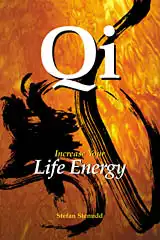 Qi — Increase Your Life Energy
Qi — Increase Your Life Energy
The life energy qi (also chi or ki) explained, with exercises on how to awaken, increase and use it.
 Aikido Principles
Aikido Principles
Basic concepts of the peaceful martial art. Aikido principles, philosophy, and fundamental ideas.
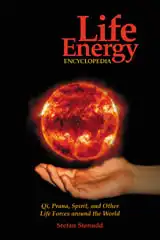 Life Energy Encyclopedia
Life Energy Encyclopedia
Qi, prana, spirit, ruach, pneuma, and many other life forces around the world explained and compared.
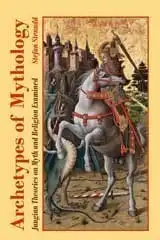 Archetypes of Mythology
Archetypes of Mythology
Jungian theories on myth and religion examined, from Carl G. Jung to Jordan B. Peterson.
 Stefan Stenudd
Stefan Stenudd
About me
I'm a Swedish author and aikido instructor. In addition to fiction, I've written books about Taoism and other East Asian traditions. I'm also an historian of ideas, researching ancient thought and mythology. Click the image to get to my personal website.Contact
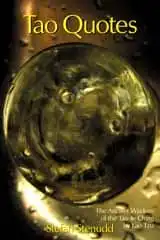 Tao Quotes
Tao Quotes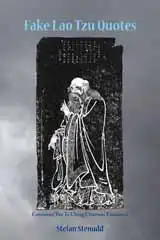 Fake Lao Tzu Quotes
Fake Lao Tzu Quotes